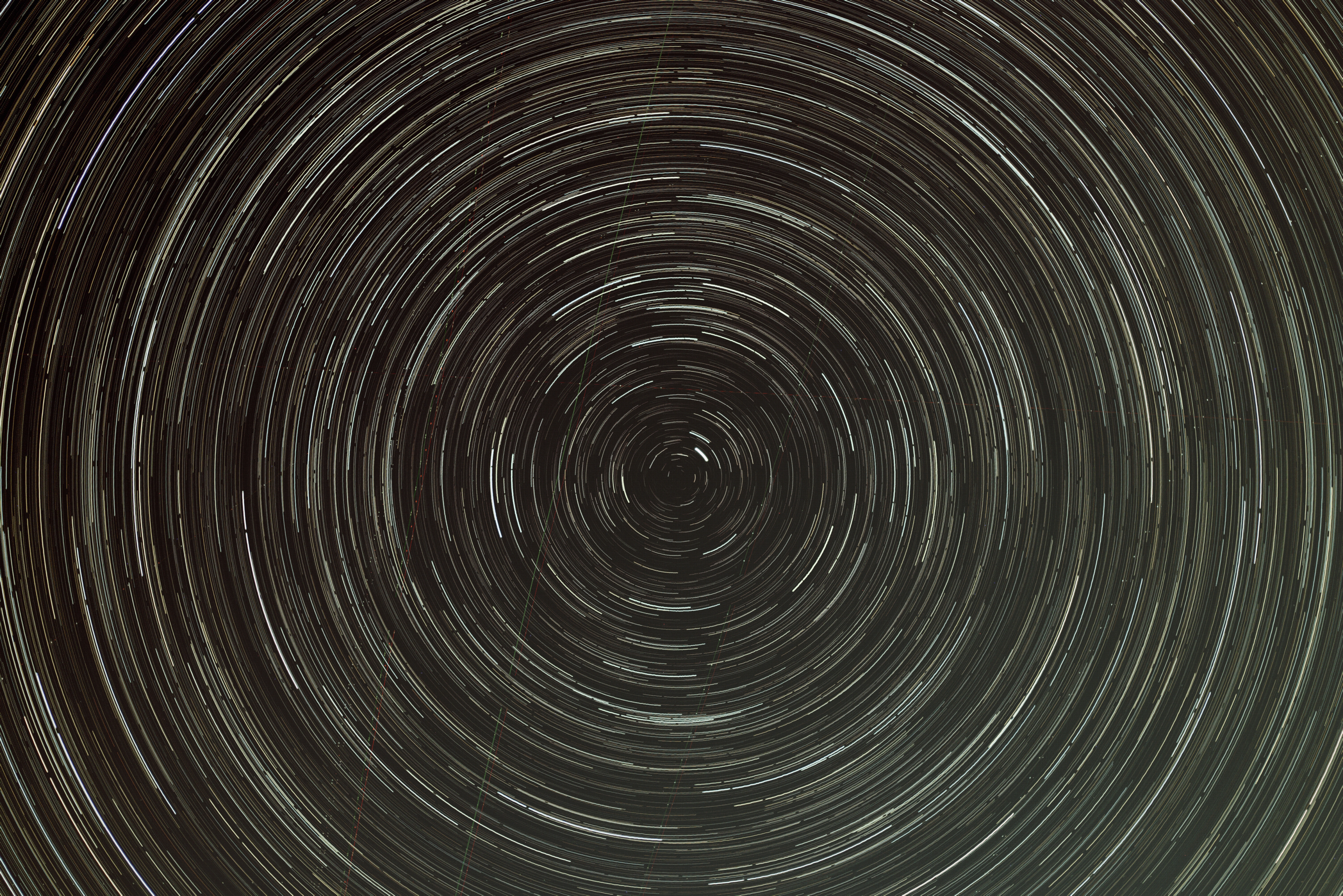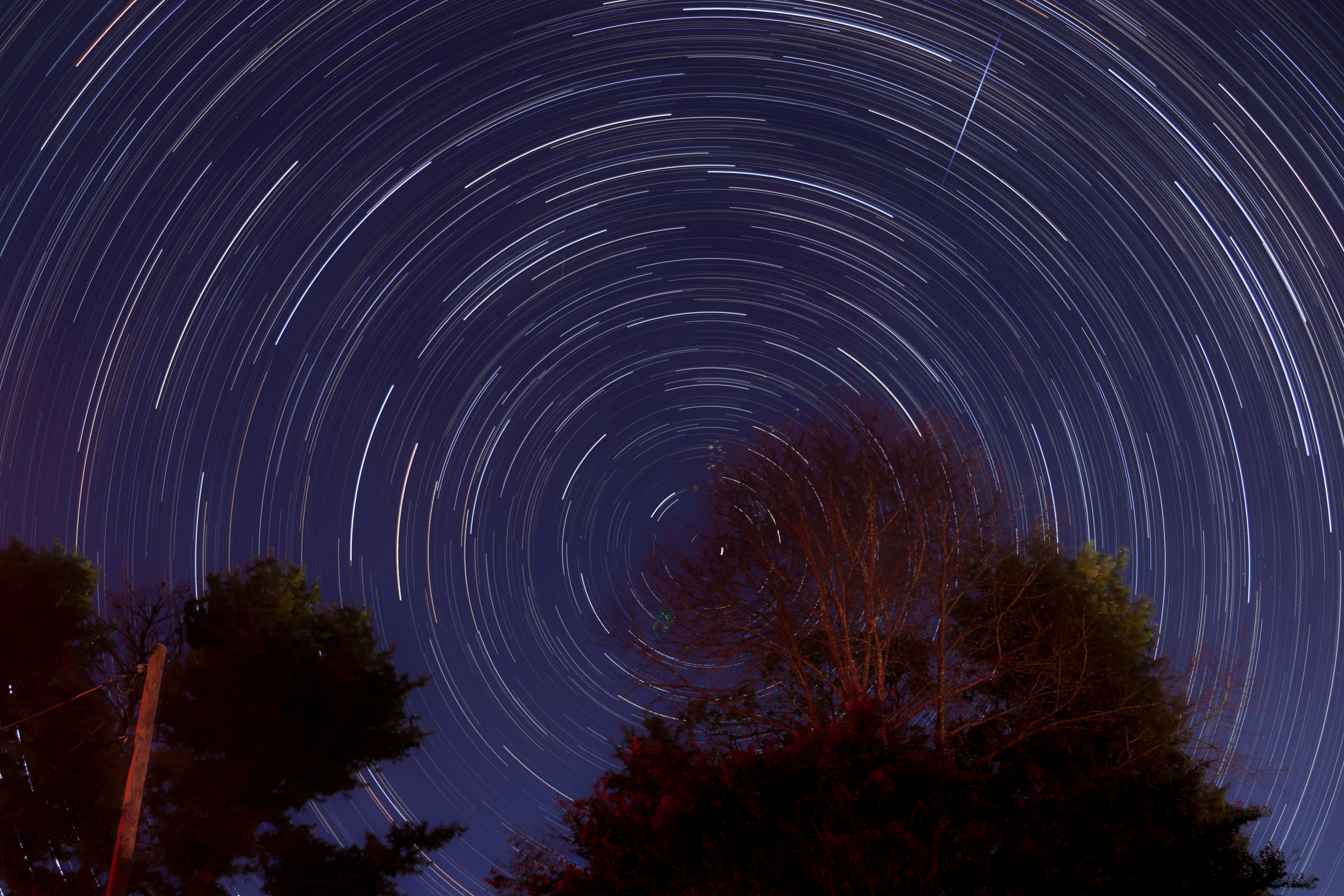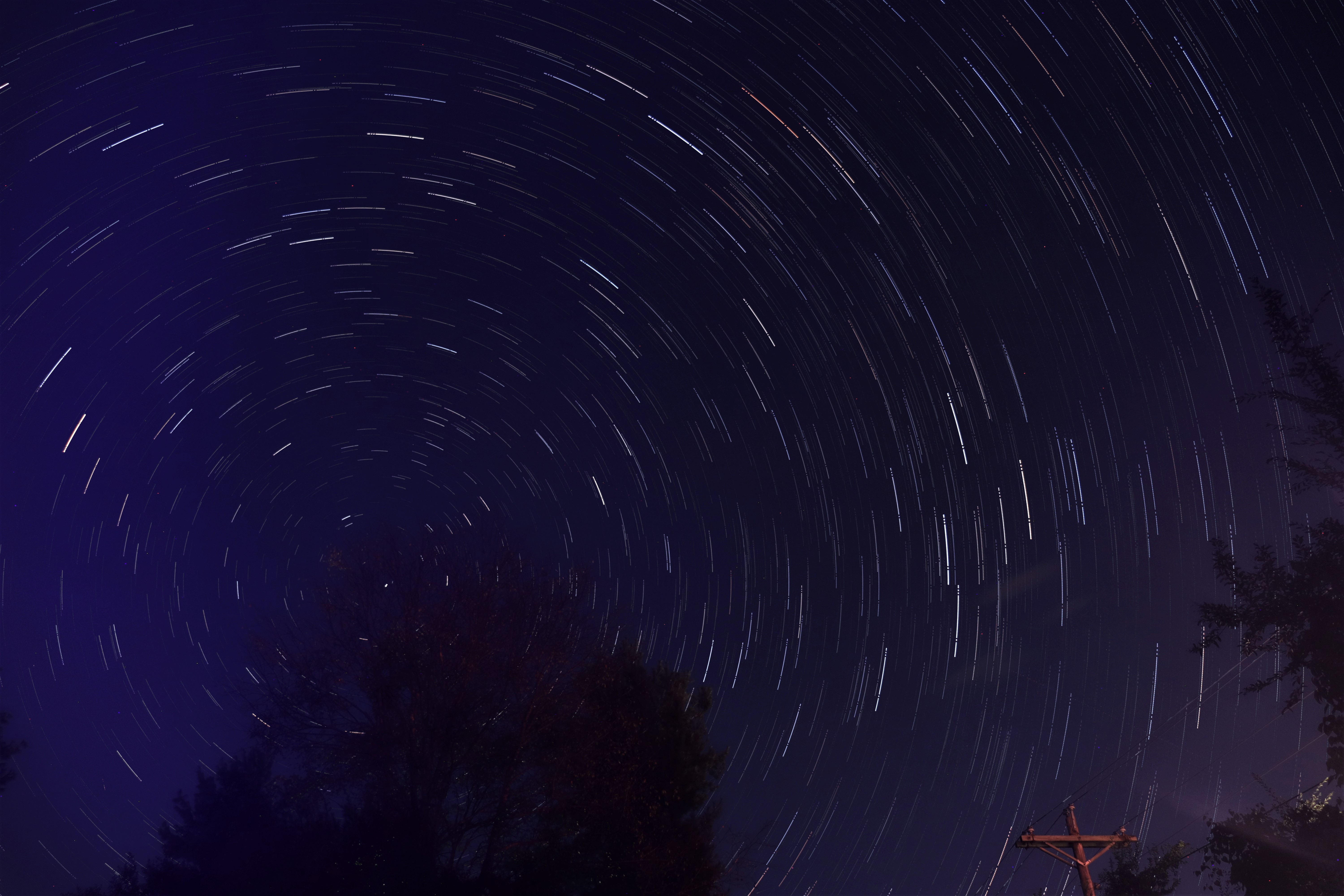Star trail images are a type of astrophotography that aim to catch the movement of stars across the night sky through the use of photos with long exposure times. From our perspective, stars appear to slowly move across the night sky from east to west because of the rotation of the Earth in the same way that our star, the sun, appears to move across the sky from east to west during the day. Capturing these star trails is relatively easy and can result in amazing scenic shots.
Using a DSLR and a tripod, you can set the camera to take continuous long exposure images (30 seconds is usually the max for the average DSLR) which can then be ‘stacked’ together to show the stars path across the sky. Because the shutter is staying open for longer, it is taking in more light not only at the position where an object starts, but also across the entire area the object crosses between the beginning and end of the exposure time. If you zoom in on one of these long exposure images you can see a small blurred streak showing the stars path within that time frame. To see a larger section of a star’s trail, we need to take long exposure images one after the other for an hour or more; these can then be stacked together using special software.
Because such image sequences are simple to take, the sets we used were recorded while we were engaged in other, more technically challenging, imaging runs.
Click on the thumbnails below to see larger versions of the final images that were created from our different nights of imaging. (All students in the class collaborated in recording the image sets from which these final pictures were created. Individual attributions refer only to post-processing.)

Pointing at the North Celestial Pole
(Rebecca Firth)

We caught a meteor!
(Rachel Stratton)

Interesting Star Colors
(HB Ford)

Fish-eye star trails
(Emma Mitchell)
© Copyright © 2022.Tennessee Tech all rights reserved